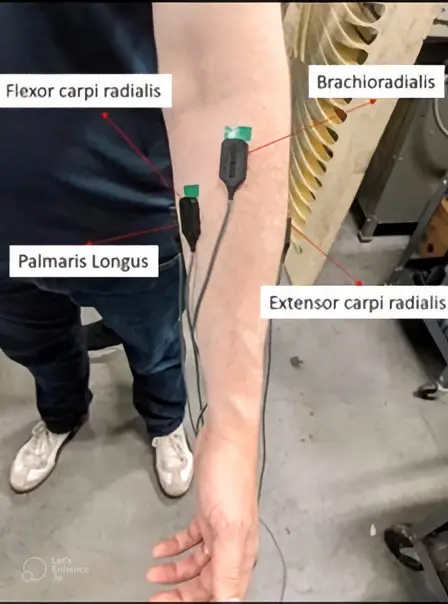Role: Lead Researcher
Timeline: May 2022
Context: LSU Department of Industrial Engineering
Methods: Electromyography (EMG), Borg CR-10 Scale (RPE), T-Tests, Controlled Experimentation (N=6)
Executive Summary
Challenge: Hand-Arm Vibration Syndrome (HAVS) affects nearly 2 million workers in the U.S., often caused by improper tool usage in riveting tasks. The “user interface” here isn’t a screen—it’s a high-vibration power tool. I needed to determine if a specific design intervention (a horizontal side handle) effectively reduced physical load or if it introduced new strain.
Approach: I designed a controlled experiment (N=6) to compare two interaction methods: the standard pistol grip vs. a side-handle grip. I used biometric sensors (EMG) to measure real-time muscle activity in the forearm and paired this with psychophysical surveys (Borg CR-10) to measure perceived exertion.
Outcome: The study revealed a fascinating paradox: The side handle actually increased specific muscle activation (providing necessary stability) but reduced perceived exertion by ~46%. This validated the side handle as a safer, more ergonomic option for industrial workers.

Research Methodology
Experimental Design: The study followed a true experimental design with 1 independent variable (Handle Presence) and 2 dependent variables (Muscle Activity & Perceived Effort).
- Task: Participants performed high-frequency riveting on an aluminum assembly.
- Sensors: Wireless Bagnoli-2 EMG sensors placed on 4 key muscle groups (e.g., Flexor Carpi Radialis)
- Subjective Metrics: After each trial, users rated their effort on the Borg CR-10 scale (0=No Exertion, 10=Maximal).

Key Insights & Data
The “Comfort” Win (RPE)
- Insight: Users felt significantly less fatigue when using the side handle.
- Data: Average Perceived Exertion dropped from 4.17 (Without Handle) to 2.25 (With Handle). This result was statistically significant ($p=0.02$).
- Impact: Lower perceived exertion correlates with longer work endurance and higher user satisfaction.

The “Stability” Trade-off (EMG)
- Insight: Biometric data showed that the Flexor Carpi Radialis muscle was actually more active with the handle ($p=0.1$).
- Interpretation: This increased activity wasn’t “strain”—it was control. The muscle was engaging to stabilize the tool against vibrations/kickback. The handle shifted the load from “passive shock absorption” (bad) to “active stabilization” (good).

Impact: Evidence-Based Design
- Safety Validated: The study provided empirical evidence that the side handle configuration is safer for long-term use, reducing the risk of HAVS.
- Design Recommendation: Industrial tool manufacturers should standardize side-handle mounts for riveting tasks to lower the cognitive and physical load on operators.